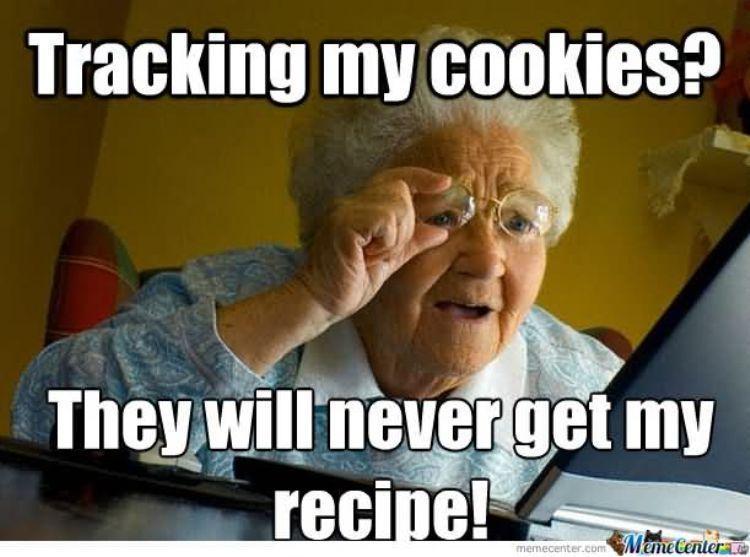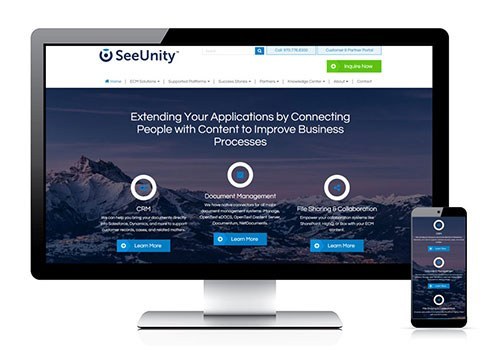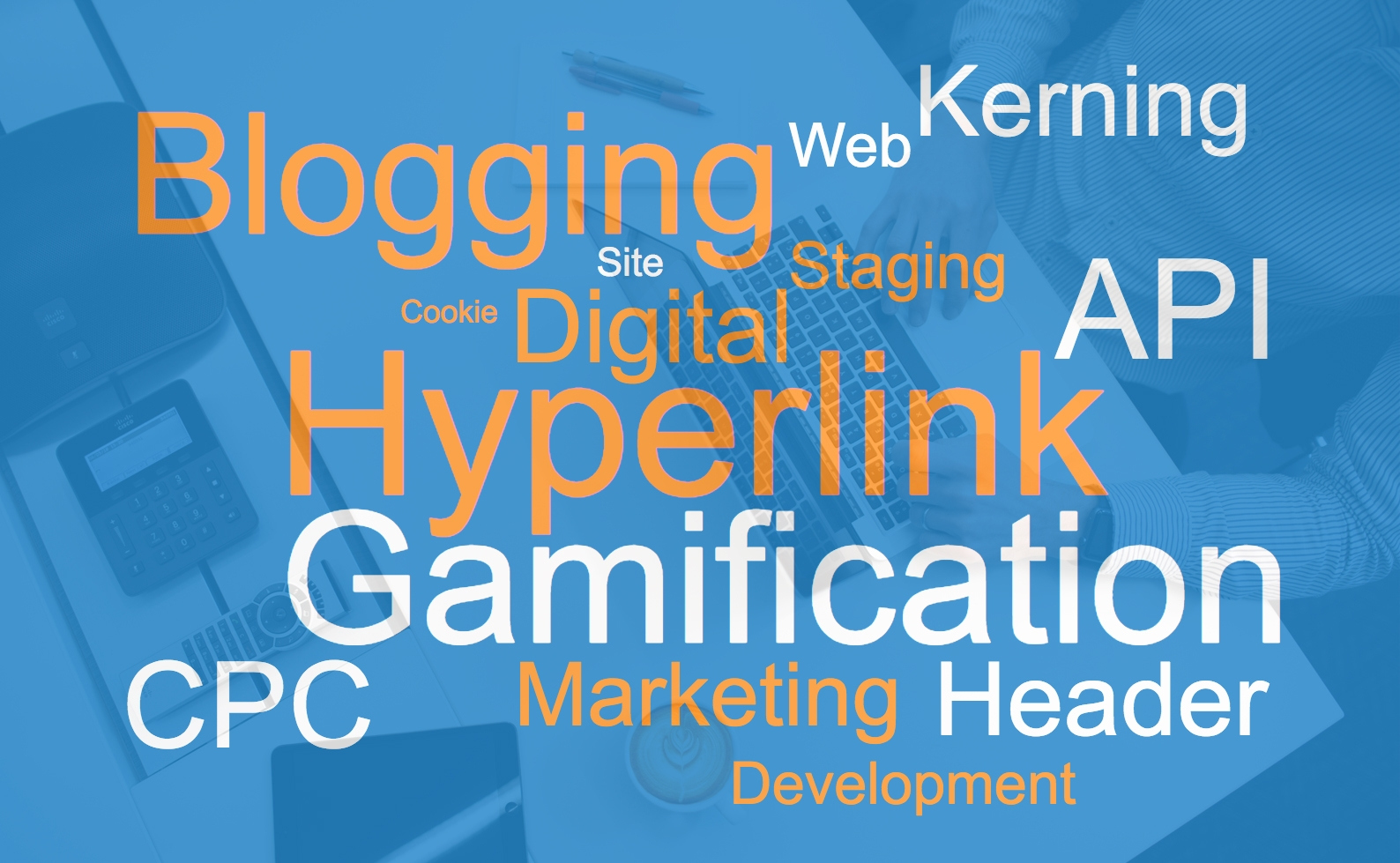Nerd Lingo - 40 Digital Marketing Terms You Should Know
Posted on September 27, 2018 Ayesha Lamons
The Art of Talking Like a Nerd
Feeling left out when your techy friends/colleagues use Digital Marketing terms you don't understand? Save yourself from doing the awkward head nod, because the NERDs are here to help.
This glossary includes some common (and no-so-common) vocabulary used in our industry.

A/B Testing
Comparing two competing versions of a web page, advertisement, etc. to measure which performs better. The variant with a better conversion rate, wins!
Affiliate Marketing
An online marketing strategy that involves online businesses paying commissions to online advertisers for sales, clicks, or registrations.
Animated GIF
A format for digital images that incorporates several images rotated in sequence, creating a rudimentary animation.
API
In computer programming, an application programming interface (API) is a set of routines, protocols, and tools for building software applications.
Blogging
A frequently updated collection of articles published to the web. Businesses have embraced blogging as a way to share knowledge with potential customers.
Branding
A customer experience represented by a collection of images and ideas; often, it refers to a symbol such as a name, logo, slogan, and design scheme.

Breadcrumbs
Typically appears near the top of a website, providing links back to parent pages and giving the user context about the hierarchy of the pages they’re visiting.
Call Tracking
Information and metrics about incoming telephone calls measuring the impact of marketing efforts on lead generation and sales.
CMS (Content Management System)
A web application used to manage website content. A CMS allows non-technical people to publish, edit and modify content without coding knowledge.
Content Modules
NerdyMind has defined content modules as the different rows of content elements that build out a page on a website.
Content Plan
A strategy document used during a website build or rebuild to prompt copywriters for content needed for sections and pages.
Conversion Rate
The percentage of users who take a desired action. The archetypical example of conversion rate is the percentage of ecommerce visitors who make a purchase.
Cookie
An information file stored by a user’s web browser and associated with a particular website. Used to store user preferences and personalization on websites.

CPC (Cost Per Click)
A metric reporting the cost paid per click in a PPC campaign. CPC is used to determine return on investment and optimize PPC campaigns.
CSS (Cascading Style Sheet)
A style sheet language used for styling the look and formatting of a website written in a markup language.
CTA (Call-to-Action)
An instruction to the audience to provoke an immediate response, usually using an imperative verb such as “call now”, “find out more” or “visit a store today”.
Drip Campaign
A method used in direct marketing to acquire customers through automated repetitive marketing actions. For example, a series of automated emails.
E-commerce
Buying and selling of goods and services over the internet. An ecommerce website focuses on selling products to interested users.
Email Blast
Sending a single email message to many people at the same time.
Forward Paths
An element used in web architecture to lead a user through a sequence of pages, or lead them further into relevant sections of a website.
Gamification
The application of typical elements of game playing (e.g., point scoring, competition with others, rules of play) to encourage engagement with a product or service.

Geo Targeting
A search marketing technique that allows an online advertiser to specify who ads will or will not be shown based on the searcher’s location.
Google AdWords
A web advertising service offered by Google that allows users to set up text ads in Google search results and display ads on their advertising network.
Header Tags
Heading tags (H1, H2, H3, etc.) are HTML text elements in a website design used for page titles or other emphasized text on the page.
HTML
The standard markup language used to create and structure elements on websites. Markup is interpreted by browsers to render web pages.
Hyperlink
One of the essential building blocks for the web; a link from a website to another page or website, activated by clicking on a highlighted word or image.
Kerning
Adjusting (removing or adding) space between letters or characters in a piece of text to be printed.
Keyword Research
A practice used by search engine optimization professionals to find, organize, and utilize common queries people enter into search engines.
Lorem Ipsum
In graphic design, lorem ipsum is a placeholder text commonly used to demonstrate the graphical placement of text elements in a visual presentation.
PPC (Pay Per Click)
An internet advertising model used to direct traffic to websites, in which advertisers pay each time an ad is clicked.
Responsive Web Design
An approach to web design & development which provides an optimal viewing & user experience across a wide range of screen sizes (desktop, tablet, mobile).

Retargeting
A form of online targeted advertising by which ads are targeted to consumers based on their previous website visits or actions.
SEO (Search Engine Optimization)
The process of optimizing the content, structure, and presentation of a website to improve visibility in a search engine’s organic results.
Staging Site
A staging site is an independent clone of your live website that can be used to test and preview design changes, plugins, and new functionality.
SSL
SSL (Secure Sockets Layer) creates an encrypted connection between a web server and visitors’ web browser allowing for private information to be transmitted.
User Scenarios
A listing of the different users for a particular website or application. User descriptions include a goal statement, sub-goals, & corresponding website needs.
User Testing
The process of recording unbiased live user feedback on websites, mobile apps, prototypes, designs, etc. with the goal of gathering actionable insights.
Web Analytics Reporting
Collecting and organizing visitor metrics for websites into informational summaries and giving insights into how a web marketing strategy is performing.
Wireframes
A visual sketch that represents the framework of a website: representing content modules, functionality, & element hierarchy on pages without visual design.

WordPress
A free, open-source, & flexible content management system
(CMS) based on PHP and MySQL, powering 25% of the web.

